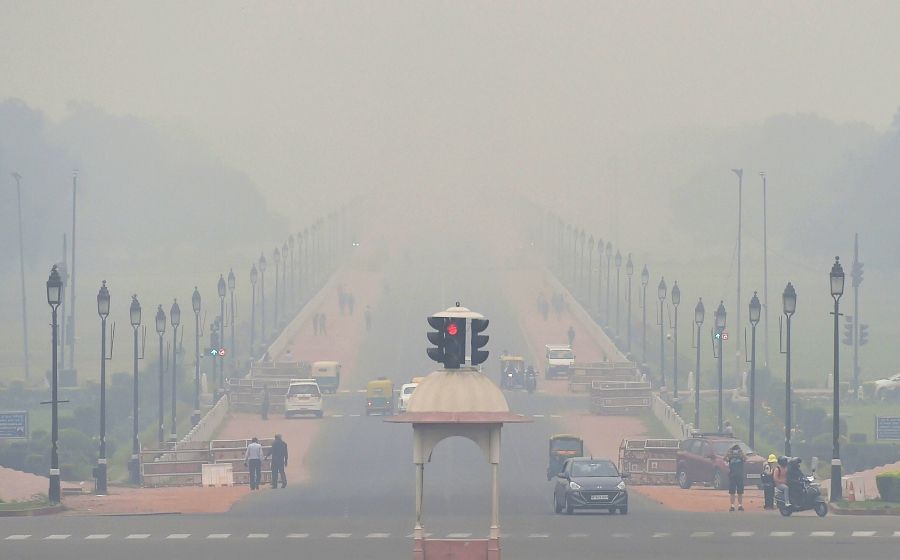
Delhi’s air quality may slip to ‘severe’ category by nightfall

Air quality in Delhi, which has been deteriorating for the past many days, was at ‘very poor’ category on Tuesday morning and is expected to slump to ‘severe category’ by nightfall, according to forecast by Air Quality Early Warning System.
The forecast said calm conditions would prevail in the morning and surface winds would come from the north and northwest direction of the national capital.
The AQI of Delhi was recorded 353 (very poor) at 4 pm on Monday.
According to India Meteorological Department (IMD), the minimum temperature of Delhi was 10 degrees Celsius in the past 24 hours – four degrees Celsius below normal. The maximum temperature on Tuesday may hover at 27 degrees Celsius while the minimum may be at 10 degrees Celsius.
Also read: Consider WFH for Delhi-NCR residents: SC tells Centre, states
The temperature is further expected to fall over the next six days, the IMD said.
The prediction comes a day after the Supreme Court rapped the Delhi government over the high pollution levels in the city, while instructing the Centre and states part of the NCR region to consider asking people to work from home and urge farmers not to burn farm waste.
On Saturday, the Arvind Kejriwal government issued a slew of measures to tackle air pollution in the city including shutting down of government offices, education institutions and construction works.
While the government has asked all educational institutions except those conducting examinations to shut down till November 20, it has put curbs on all construction activities till November 17. While all offices of the Delhi government, autonomous bodies and corporations excluding emergency services will be closed till November 17, employees have been asked to work from home.
Environment minister Gopal Rai said the measures are being implemented to cut down on vehicular and dust pollution.
The government is also running an anti-open burning campaign between November 11 and December 11. “…concerned departments have been directed to shut down diesel generator sets and coal kilns in Delhi, increase parking fees, increase the frequency of metro and bus and provide heaters to guards from RWAs,” Rai said.
He said while 400 tankers will be sprinkling water to settle dust by November 20, the government will finish work of spraying bio-decomposer solution for stubble decomposition in 4,000 acres of fields.
The government also proposed the Supreme Court to implement a lockdown in the national capital to reduce pollution levels.
Even though the Delhi government had termed stubble burning a key reason behind rising pollution levels, the Centre, citing a scientific study, on Monday told the Supreme Court that stubble burning accounts for only 4 per cent of the national capital’s air pollution in winters and 7 per cent in summers.
Taking note of this, Justice DY Chandrachud said if the central government’s claims are to be believed, the Delhi government is “targeting something which is totally insignificant”.
The court concluded that while stubble burning is a minor factor, industrial activity, power generation, vehicular traffic and construction are the major contributors to Delhi’s deteriorating air quality.
The Delhi government said that it is ready to impose lockdown in the city to curb air pollution, but the measures will have limited impact if the neighbouring states do not implement similar steps.
Also read: Delhi’s air quality worsens further, AQI recorded at 342
Earlier this month, the Ministry of Earth Sciences’ air quality monitor SAFAR, stubble burning in the neighbouring states of Punjab, Uttar Pradesh, Haryana and Uttarakhand constituted 42 per cent of the national capital’s pollution levels.
In 2020, the share of stubble burning to Delhi’s pollution had risen to 44 per cent on November 1.

